100 years on, Britain falls silent in remembrance
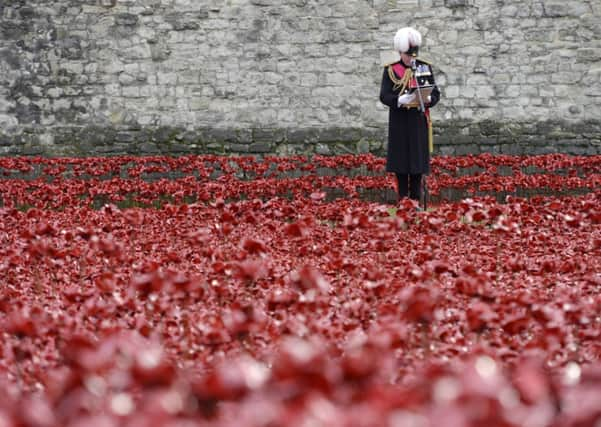

Cadet Harry Hayes, 13, was watched by a crowd of thousands at the landmark display as he placed the last of 888,246 ceramic flowers, each of which represents a British or colonial war death in the brutal conflict.
The cadet, from Reading Blue Coat School in Berkshire, completed the vibrant red swathe of Blood Swept Lands and Seas of Red, which has become a focal point for Remembrance commemorations in this centenary year.
Advertisement
Hide AdAdvertisement
Hide AdThere were more commemorations, private and public, across the UK and further afield, including the National Memorial Arboretum in Staffordshire and at Ypres on the former Western Front in Belgium, to remember the millions of British servicemen and women who have died in conflicts.
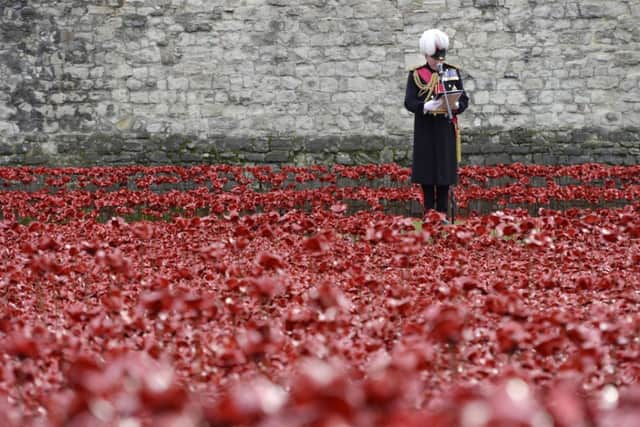

Since last year’s Armistice Day, another seven members of the British armed forces have died in service - including five who died in a helicopter crash in Afghanistan in April.
Echoing one of the most iconic images of this year’s Remembrance commemorations, the sea of ceramic poppies at the Tower of London, pupils at a primary school in Market Weighton, East Yorkshire, planted clay poppies, with the final poppy laid by four-year-old Anna Howlett at 11am.
In Leeds, veterans, dignitaries and members of the public gathered at the War Memorial on Victoria Gardens for a short service to mark Armistice Day.
Advertisement
Hide AdAdvertisement
Hide AdTraffic around the memorial was halted as the city joined the nation in pausing to pay their respects to the war dead.
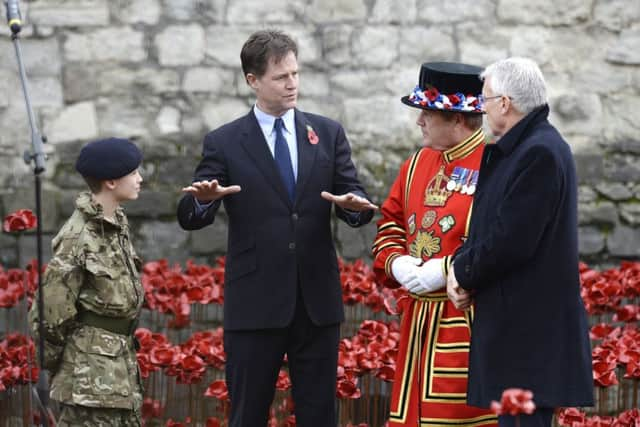

The Lord Mayor of Leeds, Councillor David Congreve said the service was an opportunity for people “to come together as one and remember those people who made the ultimate sacrifice during times of conflict.”
He said: “The sacrifice that they made for us should never be forgotten, and it is especially poignant this year as we reflect on and mark the beginning of the First World War one hundred years ago.
The bugle’s Last Post also sounded during a moving ceremony at the Royal Armouries, where poppies fell from the rafters onto the congregation below to mark the end of the two-minute silence.
Advertisement
Hide AdAdvertisement
Hide AdAmong the veterans gathered at the city centre museum was Jack Walker, from Leeds, who was with the Cold Stream Guards from 1949 to 1961.
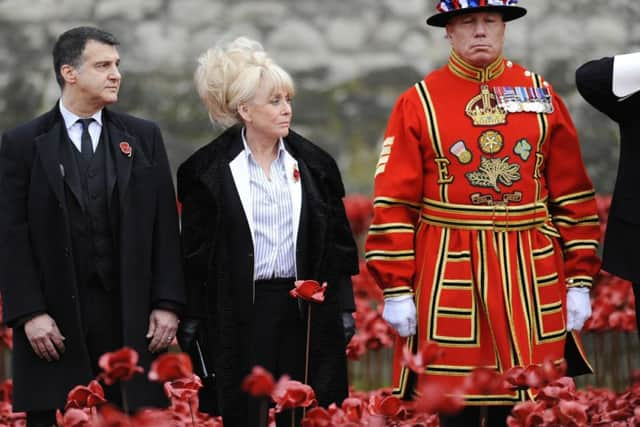

The 82-year-old now has terminal cancer and is staying at Leeds’ St Gemma’s Hospice, where staff rallied behind the scenes make sure he didn’t miss the service.
He said: “It was a wonderful service. I was overjoyed that I was able to get here.”
Mr Walker, who lost a twin brother at the age of 19 with the West Yorkshire Regiment, said on Armistice Day he thinks about the “millions that didn’t come home”.
Advertisement
Hide AdAdvertisement
Hide AdHe added: “They are the heroes - and the ones who suffered terrible injuries. There’s just no explanation, there’s nothing you can put into words, the extent of feeling about that sort of thing.”
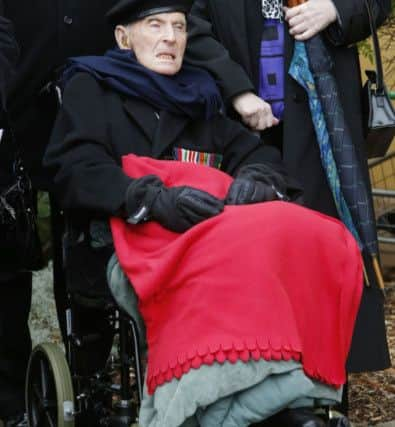

General the Lord Dannatt, Constable of the Tower of London, read from the famous poem For The Fallen ahead of the traditional two-minute silence observed by millions across the country.
He said: “We always hoped the installation would capture the public imagination yet we could not predict the level of support we have received and for this we are truly grateful.
“Not only have we raised vital funds for six service charities but I hope we have also created a fitting tribute to all those who lost their lives.”
Advertisement
Hide AdAdvertisement
Hide AdHe said five million people have visited the Tower to see the poppies.
Thousands more people gathered in Trafalgar Square, where the Royal British Legion held its Silence In The Square from 10am. Led by Good Morning Britain presenter Ben Shephard, attendees threw poppy petals into the fountain to mark the end of the silence.
Prime Minister David Cameron paid his respects at the Cenotaph in Whitehall in a remembrance service organised by the Western Front Association.
The Queen privately observed the two-minute silence before beginning an investiture ceremony at Buckingham Palace.
Advertisement
Hide AdAdvertisement
Hide AdWreaths were laid at the Cenotaph, including by pupils of Thetford Grammar School, which lost seven former pupils and four teachers in the First World War.
Seven-year-old schoolboys Alexander Boys-Smith, Noah Kontto-Stubbs and Thomas Dunn, from Eaton House School in Belgravia, also took part in the ceremony.
Headteacher Lucy Watts said: “It is a huge privilege to be here. It is something that has become a tradition for our school but we are very conscious that it is just a small number of schools who have this opportunity.”
Another was laid by Valerie Beattie, 59, for her great uncle Leonard Flanders Peacock, who died in the Somme.
Advertisement
Hide AdAdvertisement
Hide AdShe said: “He volunteered at the age of 30. He was killed in the Battle for High Wood on the 30th of July 1916. It’s very emotional to be here today.”
In Trafalgar Square, people came out from nearby buildings to pay their respects and traffic nearby stopped to observe the two-minute silence.
Lance Corporal Stuart Laing, from the band of the Welsh Guards, played the Last Post and Reveille to mark the start and end of the silence.
Britain’s Got Talent winners Collabro were among musical performers in the Square.
Advertisement
Hide AdAdvertisement
Hide AdBand member Michael Augur said: “Even if some of the younger generation aren’t aware of it we’re here to show them it isn’t lost on us.
“Every time we speak about it we get emotional.”
Paul Cummins, the artist behind Blood Swept Lands and Seas of Red, was asked by the BBC whether he had thought about what he might do to mark the centenary of the end of the war in 2018.
He replied: “I think I will sleep first.”
The first flowers were planted in July, with 17,500 volunteers helping install them.
The artwork was officially unveiled by the Duke and Duchess of Cambridge when 120,000 were in place in August. The remainder were gradually added over the weeks leading up to today.
Advertisement
Hide AdAdvertisement
Hide AdEach flower has been sold for £25 to raise money for the charities but there have since been calls for the display to be kept in the moat.
It was announced at the weekend that the wave section of the artwork will remain on show until the end of the month.